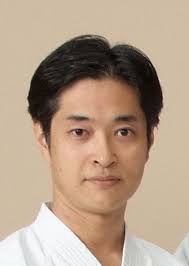Last fall, I visited the Yoshimura Udun grave in Naha. Udun means palace, but it also means royal family. As I have mentioned several times before, both Yoshimura Chōmei’s eldest son Chōshin and second son Chōgi learned karate, and Chōgi in particular is important in the history of karate because he described, albeit briefly, the martial arts situation in Okinawa at the time in his autobiography.

The original Yoshimura Udun tomb was a traditional turtle shell tomb located in Shuri Taira Town, but it has now been relocated to a more modern grave, as shown in the photo above. In fact, to the left of this grave, there is an exactly similar grave of the Ou family (奥武殿内).

The Yoshimura Udun and the Ou family. What is the relationship between these two families? In fact, Yoshimura Chōmei was originally from the Ou family and was adopted into the Yoshimura Udun. The genealogy of the Yoshimura Udun contains the following description:
[Yoshimura Aji Chōmei] was originally the fifth son of Shō Bunki, a.k.a. Ou Uēkata Chōshō, and his mother was Uto, daughter of Matsushima Uēkata Chōjō, but since his second cousin Shō Ken, a.k.a. Prince Yoshimura Chōshō had no heir, Chōmei applied to the king on June 22, 1847 to become Chōshō’s successor, and was enrolled on June 24.
The first head of the Yoshimura Udun was the third son of King Shō Boku (reigned 1752–1794). On the other hand, The Ou family was a branch of the Urasoe Udun, the lineage of the second son of King Shō Boku. In other words, both families were descendants of the same King Shō Boku, and Yoshimura Chōmei (Ou Chōmei) and Prince Yoshimura Chōshō were second cousins.
In fact, Prince Yoshimura Chōshō was the sixth son of King Shō Kō (reigned 1804–1834), who was adopted into the Yoshimura Udun, so they were not really second cousins. This point, too, would take a long time to explain in detail, so I will omit it. In any case, the Yoshimura Udun and the Urasoe Udun shared the same bloodline of King Shō Boku, and were, so to speak, “brother royal families.”
Ou Chōchū (奥武朝忠), the sixth son of Ou Uēkata Chōshō, was also adopted into the Urasoe Udun, which had no heir. Later he took the name Urasoe Chōchū (浦添朝忠). As described in “Urasoe Chōchū — Forerunner of Itosu Anko,” he established a private school and started teaching karate at the school ahead of Itosu Ankō.
Both Yoshimura Chōmei and Urazoe Chōchū were leaders of the stubborn party, but these two were actually brothers. And their mother Uto’s father, Matsushima Uēkata Chōjō, was the second son of Motobu Aji Chōkyū, the 6th head of the Motobu Udun. Therefore, both of them are related to the Motobu Udun. The genealogy is as follows:

And both Yoshimura Chomei’s wife and Motobu Chōshin’s wife were daughters of Prince Ie Chōchoku of the Ie Udun.

There were more than two dozen udun (royal branch families) at the end of the Ryukyu Kingdom, but the three main families that appear in the history of karate since the Meiji period are the Yoshimura Udun, Urasoe Udun, and Motobu Udun families.
It was no mere coincidence that these three families emphasized the martial arts. In particular, the Yoshimura Udun and Motobu Udun families were both located in Shuri Akahira Town, across the street from each other. The Yoshimura and Motobu brothers were close in age and may have practiced karate with each other. Thus, by researching blood and neighborhood relationships, connections to karate and kobudo may come to light.
Thank you for reading my story. If you would like, please follow me.
Written by:

Thank you for reading my story. If you would like, please follow me.
Shihan, Motobu Kenpō 7th dan, Motobu Udundī 7th dan. Discusses the history of karate and martial arts, and introduces Japanese culture and history.
